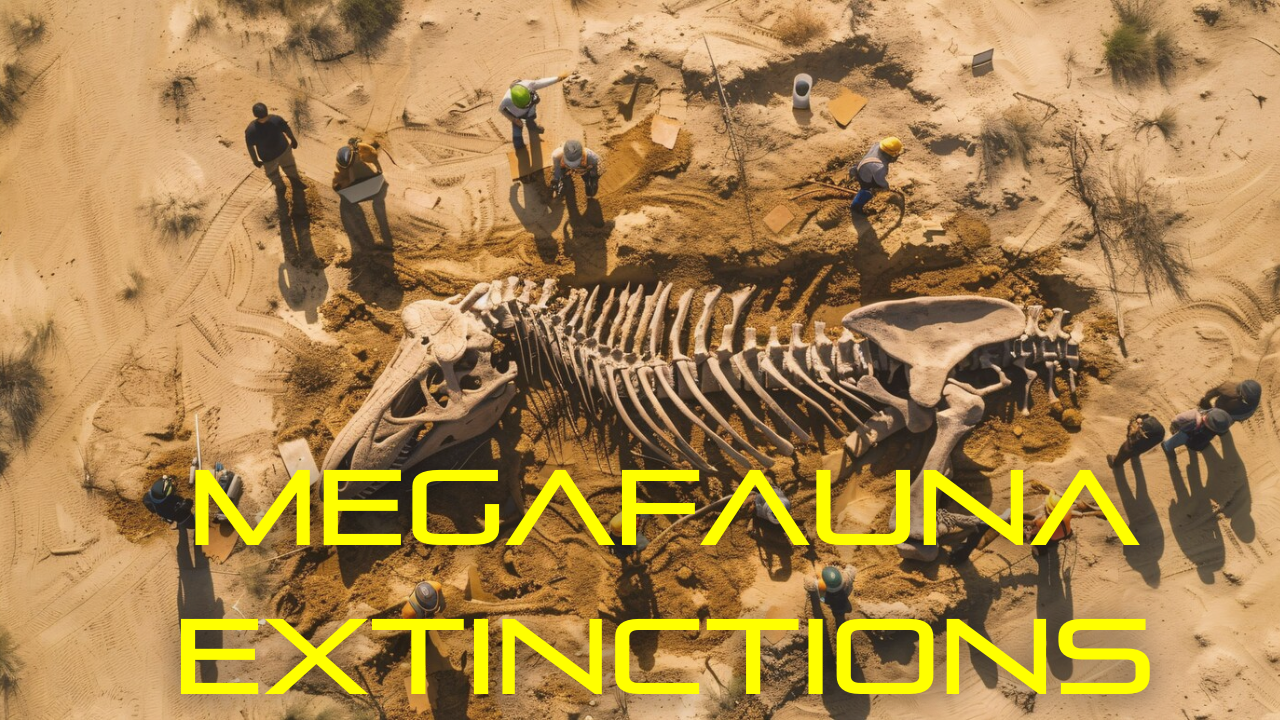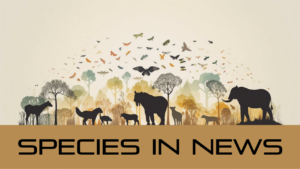Font size:
Print
Megafauna Extinctions
Context: Over the past 50,000 years, land vertebrate faunas have undergone significant losses, particularly of large species known as megafauna.
Megafauna Extinctions: A Unique Phenomenon:
- The selective loss of megafauna is unprecedented in the past 66 million years.
- Climate Change Role: Previous climate change periods did not lead to such large, selective extinctions, suggesting climate played a minor role.
- Impact Across Stable and Unstable Areas: Recent extinctions affected climatically stable and unstable areas equally, further diminishing climate as a primary cause.
- Global Extinction Patterns
-
- Widespread Extinction Events: Extinctions occurred globally but varied widely in timing and rate, correlated with human arrival or cultural advancements.
- Varied Timelines: Extinctions occurred rapidly in some areas and over millennia in others, but all followed the presence of modern humans or cultural changes in Africa.
- Human Hunting and Vulnerability of Megafauna:
-
- Archaeological Evidence: Traps designed for large animals and isotope analyses of ancient human bones indicate widespread hunting of megafauna. Led to decrease in population.
- Vulnerability Factors: Megafauna’s susceptibility to overexploitation was exacerbated by long gestation periods, low offspring production, and slow maturity.

Megafauna Overview:
- Megafauna refers to large animals found in all terrestrial regions worldwide. Generally, they are defined as animals weighing over 40 kg or over a tonne.
- Term is used to denote the largest living and extinct terrestrial wild animals, such as giraffes, elephants, rhinoceroses, and hippopotamuses.
- Importance:
-
- Megafauna are crucial ecosystem engineers, shaping habitats through grazing and browsing, and regulating the abundance of smaller animals.
- Studying megafauna offers valuable insights into ecological systems, evolution, and conservation.
Ecological Impacts of Megafauna Loss:
- Global Extinction Impact: Species went extinct on all continents and in diverse ecosystems, from tropical forests to arctic regions.
- Adaptability of Extinct Species: Many extinct species thrived in various environments, suggesting climate change alone couldn’t explain their disappearance.
- Ecological Consequences: Loss of megafauna significantly altered ecosystem structures and functions, affecting vegetation, seed dispersal, and nutrient cycling.
Conservation and Restoration Efforts: Need for Conservation: The profound ecological consequences highlight the urgency for active conservation and restoration efforts.
- Restoration Benefits: Reintroducing large mammals can help restore ecological balances and support biodiversity, crucial for ecosystems that evolved with megafauna richness.
The Cheetah Reintroduction Program:
- It is an initiative by the Government of India aimed at reintroducing cheetahs to the country, following their local extinction in 1952.





